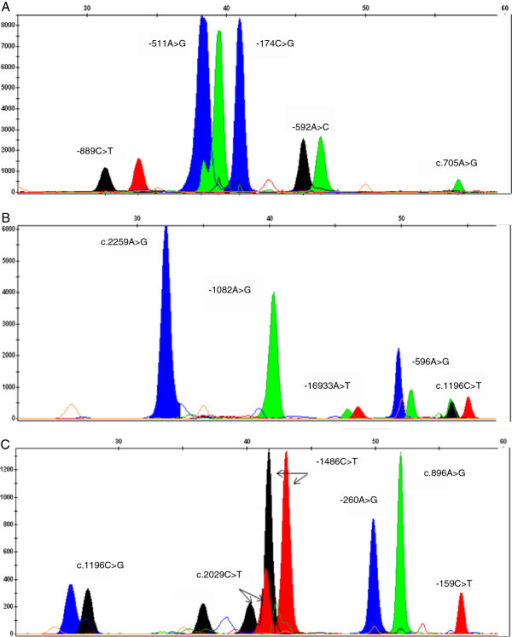 The Bioanalyzer is a genomics instrument which is chip-based machine works on the principle of capillary electrophoresis to analyze and quantify RNA, DNA and Protien. Bioanalyzer provides rapid, accurate and reproducible analysis of the quality of RNA, DNA and Protein samples as well as quantification of these. Prior to micro array analysis, bioanalyzer is used for the qualitative and quantitative analysis of RNA samples. The technology is based on microfluidics and is capable of performing eletrophoretic separations. Results, high quality digital data are produced within 30-40 minutes. Very famous bio analyzer is Agilent 2100 Bioanalyzer which offers the detection and quantification of RNA, DNA, Protein and even cells. This instrument is automated which offers reduced hands-on time, improved accuracy, improved precision and increased productivity.
The Bioanalyzer is a genomics instrument which is chip-based machine works on the principle of capillary electrophoresis to analyze and quantify RNA, DNA and Protien. Bioanalyzer provides rapid, accurate and reproducible analysis of the quality of RNA, DNA and Protein samples as well as quantification of these. Prior to micro array analysis, bioanalyzer is used for the qualitative and quantitative analysis of RNA samples. The technology is based on microfluidics and is capable of performing eletrophoretic separations. Results, high quality digital data are produced within 30-40 minutes. Very famous bio analyzer is Agilent 2100 Bioanalyzer which offers the detection and quantification of RNA, DNA, Protein and even cells. This instrument is automated which offers reduced hands-on time, improved accuracy, improved precision and increased productivity.
Scale is small sample volume, less waste, reduced bench space and reduced reagent usage.
"BioAnalyzer works on the principle of capillary electrophoresis."
What is Capillary Electrophoresis?
The electrophoresis system is employed with capillary tubing within which the electrophoretic separation occrurs. For faster separations, it uses the high electric field. This electrophoresis uses detector technology which provides electropherogram in the software. For this, required sample volume is very minute and even requires minute volumes of reagents. The electrophoresis is easy automated for precise analysis and easy to use.
 |
| Image Source; Wikimedia Commons |
"When capillary is filled with a suitable polymer gel and injecting a sample in it, with the help of the high electric field, the separation takes place. As the analytes pass the detector, they are monitored and recorded".
 |
| Image Source: Open-i, Electropherograms |
Agilent Bioanalyzer:
Agilent bioanalyzer is a famous and commonly used for the quality control of RNA, DNA or Protein. It is lab on chip and works on the principle of capillary electrophoresis. (It is based on microfluidics technology and is capable of performing electrophoretic separations).
The Lab-on-a-chip from agilent has tiny channels which are analagous to the capillary tubing from CE. RNA or Proteins are subjected to an electric field, which will migrate along a separation channel and which will be picked by the detectors.
 |
| Image Source: Science Aid Center, Genomics |
There are 4 types of Chips:
1) RNA Chip: for RNA integrity, RNA Quantification and small RNA sizing
2) DNA Chip: for DNA sizing and DNA quantification
3) Protein Chip: for Protein Purity, Protein Sizing and Protein Quantification.
4) Whole cells chip: for small 2 color flow cytometry experiments.
Below is the sample example for DNA.
 |
| Source: Research Gate |
Next Post: How Agilent Bioanalyzer works? and Protocol?
Comments
Post a Comment